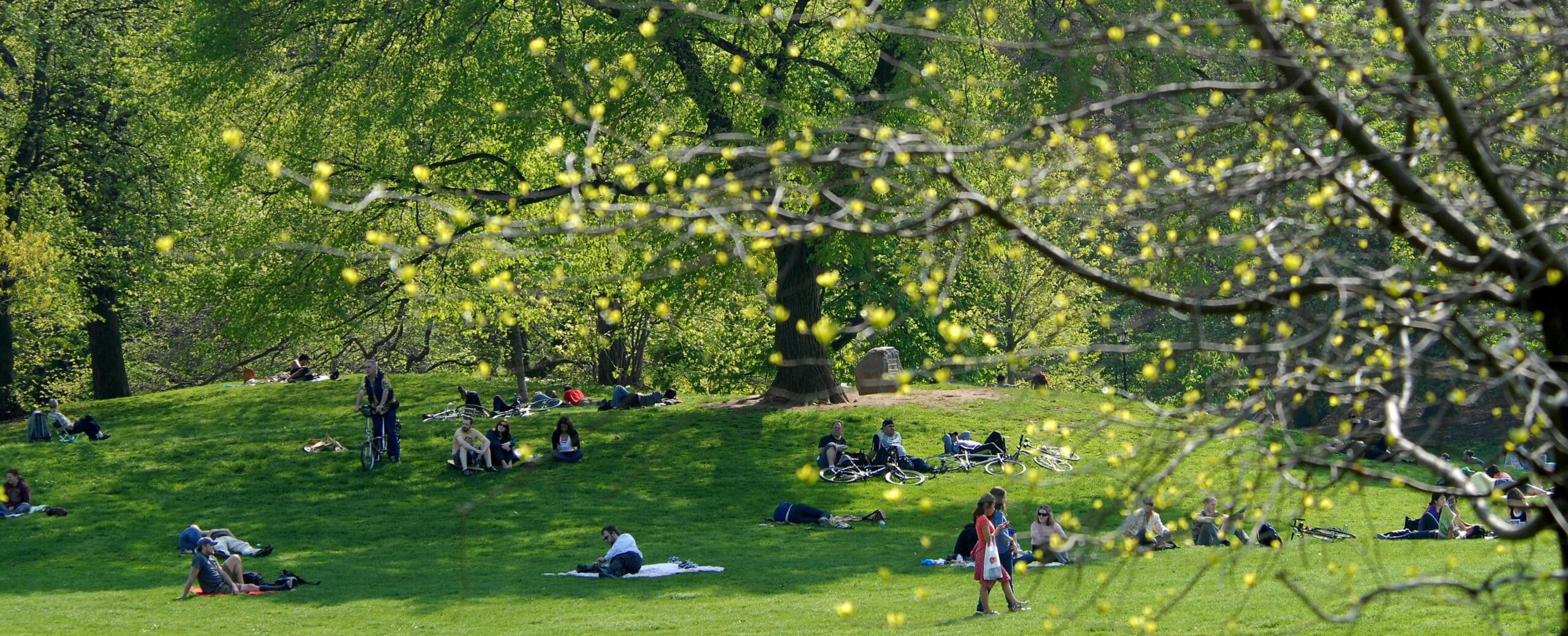This month, Prospect Park Alliance mourns the passing of two individuals, Founding Board Chair Terry Christensen and longtime Board Member Leslie Beller. These dedicated members of our community leave a lasting legacy on Prospect Park.
Henry “Terry” Christensen III
The Founding Board Chair of Prospect Park Alliance, Terry Christensen passed away on November 3, 2017. He founded the Alliance with Tupper Thomas in 1987 and served as Chair of the Board of Directors for 20 years, until he stepped down in 2007. He first became a supporter of Prospect Park in 1983 when he gave $100 to the Alliance’s precursor—Prospect Park Tree Trust—and instantly became the Park’s largest individual donor.
Christensen lived across the street from the Park, and enjoyed its acres with his four children. “I love everything about Prospect Park,” Christensen reminisced in a 2015 interview. “I have so many memories in the Park, picnics in the Park with our children, walking around the watercourse… It’s a place of unending beauty. That’s why it’s so important, it’s the backyard for all the people of Brooklyn.”
Tupper Thomas, as Prospect Park’s first Administrator, reached out to Christensen to ask for his help in the Park, and in 1987 they launched the Alliance with the blessing of Mayor Ed Koch. They called their new organization an “Alliance” rather than a “Conservancy,” because in their view they were not “conserving” the Park, but rather bringing together the public and private sectors in innovative new ways. The model that they created has been widely admired and adopted throughout the country.
During Terry’s tenure the Alliance grew its annual operating budget from $40,000 to $10 million—the Alliance now provides a majority of the staff and resources to care for the Park. Overseeing the restoration of the Park’s 1912 carousel was his first project as Board Chair, and restoring Brooklyn’s last remaining forest was his last. While everybody loves the Carousel, which was dedicated to him in 2007, the forest and the park’s landscape were his real passion.
As Al Garner, who succeeded him as Board Chair, has said, “Terry set the bar for truly effective leadership” while making it look easy and brought a rare combination of vision and practicality to the task. Quite simply, the Alliance would not exist without Terry’s leadership, for that we—and millions of Brooklynites—will forever be grateful. His legacy lives on through our beloved Park, which he called his “fifth child.”
An attorney with Sullivan & Cromwell and then McDermott Will & Emery, Terry led an extensive international practice advising multinational families, family offices and trustees. In addition to his service to the Alliance, Terry was actively involved in community and cultural life. He served as a member of the BAM board for 25 years and provided steady guidance to many other organizations’ boards including Theater for a New Audience, The Rita + Alex Hillman Foundation, the American Council for Oriental Research and many others.
Christensen passed away at the age of 72. He is survived by his wife Constance—they celebrated their 50th anniversary this summer—as well as his children Alexander (Susan), Gus (Courtney Booth), Elizabeth and Katherine, four grandchildren and a sister, Karen Cheeseman.
Read more about his life in The New York Times.
Leslie Beller
A longtime Board Member of Prospect Park Alliance, Leslie Beller passed away on October 30, 2017. For more than 27 years, Beller served on the Prospect Park Alliance Board of Directors, including as Secretary, co-chair of the Development Committee, and a member of the Operations and Design + Construction Committees. She was deeply committed to making Prospect Park a safe and vibrant destination and was an avid park-goer herself, spending many weekends on the Long Meadow and the Parade Ground as her children grew up playing on the sports fields.
Her boundless enthusiasm touched so many corners of the Park and the lives of so many Brooklyn families. Beller championed the restoration of some of the Park’s most iconic features, including the woodland Ravine and historic Boathouse, while campaigning for dramatic improvements, such as the celebrated Samuel J. and Ethel LeFrak Center at Lakeside. The LeFrak Center was a particularly significant milestone for her. As she herself said, back in the early 1980s when she was teaching her daughter to skate at the former Wollman Rink, she could only dream of an organization that could think that big and create something as beautiful as Lakeside.
A magnetic personality and fearless fundraiser, Beller helped grow the Alliance from a small grassroots organization into a professional and renowned leader in the field, while never losing sight of the importance of engaging the community and all of the neighborhoods surrounding the Park. She constantly inspired new friends and neighbors to become involved with the Alliance. Leslie was a true force of nature—loyal, passionate and generous—and a great friend. The Alliance was able to celebrate her legacy, along with former Board Chair Al Garner’s, at its 2015 Gala.
Leslie also served as a board member of The Brooklyn Museum from 2002 until her death, as well as of the Park Slope Civic Council. Leslie died peacefully at home surrounded by her husband Alan, her daughter Elizabeth and son David, their spouses Michael and Brigid and her granddaughter Clementine.
Read more about her life in The New York Times.




